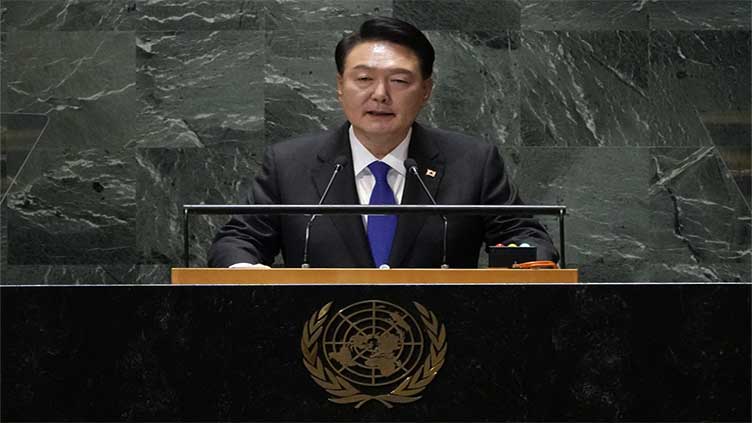US and South Korea sign joint nuclear deterrence guidelines in face of North Korean threats

World
US and South Korea sign joint nuclear deterrence guidelines in face of North Korean threats
SEOUL, South Korea (AP) — The U.S. and South Korea signed joint nuclear deterrence guidelines for the first time, a basic yet important step in their efforts to improve their ability to respond to North Korea’s evolving nuclear threats.
Meeting Thursday on the sidelines of a NATO summit in Washington, President Joe Biden and South Korean President Yoon Suk Yeol commended what they called “the tremendous progress” that their countries’ alliance has made a year after creating a joint Nuclear Consultative Group.
The two leaders authorized “the U.S.-ROK Guidelines for Nuclear Deterrence and Nuclear Operations on the Korean Peninsula,” which were signed by defense officials Thursday, according to South Korea’s presidential office. ROK stands for the Republic of Korea, South Korea’s official name.
Last year, the U.S. and South Korea launched the consultative body to strengthen communication on nuclear operations and discuss how to integrate U.S. nuclear weapons and South Korean conventional weapons in various contingencies. The U.S. has long promised to use all its capabilities, including nuclear weapons, to defend South Korea if it is attacked, but faced suspicions that it lacks plans on how it would exercise its extended deterrence for its Asian ally.
The consultative body was established as North Korea has sharply accelerated its missile testing activities and openly threatened to use nuclear weapons preemptively in potential conflicts with its rivals. South Korea has no nuclear weapons.
South Korea abandons plan to suspend licenses of striking doctors to resolve medical impasse
“The presidents underscored that the Guidelines document provides a solid foundation for enhancing U.S.-ROK extended deterrence cooperation in an integrated manner,” said a joint statement by Biden and Yoon.
Du Hyeogn Cha, an analyst at Seoul’s Asan Institute for Policy Studies, said the guidelines mark substantial progress in deterrence plans, but the allies will still need to fill in the details and conduct military exercises to test them.
Kim Tae-hyo, a deputy national security director in South Korea, told reporters that South Korea and the U.S. will conduct joint military exercises to help implement the deterrence guidelines. He said the U.S. would commit specific nuclear assets to a role in deterrence plans, but experts added that this does not mean it would permanently place nuclear weapons in South Korea.
Specifics of the guidelines, which Seoul called confidential, were not available, though the U.S. will certainly retain control of its nuclear weapons.
“The key is how to integrate South Korea’s conventional weapons and America’s nuclear weapons to launch joint, massive retaliation to North Korea, when it carries out nuclear strikes on South Korea,” said Kim Yeol Soo, an expert at South Korea’s Korea Institute for Military Affairs.
He said prospects for South Korea-U.S. coordination are bright if Biden is re-elected in the November election, but could suffer a setback if former President Donald Trump returns to the White House.
North Korea is expected to respond angrily to the announcement, as it has previously accused its rivals of using the consultation group to plot a nuclear attack on the North.
Worries about North Korea have further deepened since North Korean leader Kim Jong Un and Russian President Vladimir Putin in June signed a deal requiring each country to provide aid to the other if it is attacked, and vowed to boost other cooperation. Analysts say the accord represents the strongest connection between the two countries since the end of the Cold War.



